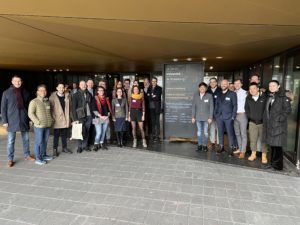IP management trends in the digital transformation: 1st Module of the MIPLM 2022-2023
The digital transformation changes every aspect of our lives and this also means, that the way IP is used and how IP work is organized constantly changes. The objects that are now protected by IP become increasingly digital and such digital IP is used by traditional companies in digital business models to protect them against the competition from big tech or tech startups. One example for that is Hangrohe RainTunes.
But during the digital transformation also the way how companies interact and compete changes. Competitors becoming partners is a trend that is visible especially in digital and platform based eco-systems. The digitalization of products enables eco-system operators to invite digital service providers to become partner in their eco-system in a mutually beneficial way.
Finally, also the way how companies and IP experts interact changes. Fueled by the relocation to the home office during the COVID pandemic, the work environment has drastically changed for both private practice and in house IP departments. This posed challenges in IP department, like the difficulty to promote IP in the organization while the staff is working hybrid.

What are the current IP management challenges in 2023?
Starting on 30th January 2023 the first module of the MIPLM was held at the Cardo of the CEIPI in Strasbourg with 25 students from 15 nations all over the world. The 1st module of the MIPLM focusses on strategy development and the IP economy. In the first part of this module different scenarios are discussed how IP is developing in the framework of the digital transformation. The lectures also comprise questions about the knowledge economy and the role of IP in economic studies.
In the second part different approaches are presented, how corporate strategies can be evaluated, and generic IP strategies are developed and aligned with competitive strategic approaches. Especially the question, how IP strategies should be addressed to C-Level managers and can be effectively communicated, is discussed. Case study examples help to illustrate the key learnings from a practical side. In intensive group work within an international and interdisciplinary background the students learn, how to integrate patents, trademarks and design rights in a systematic way to create effective spheres of exclusivity around customer benefits accompanied of premium price strategies in b-to-b and b-to-c markets.
In the first group homework the students were tasked to describe, which IP management challenges they see in their work environment. The tasks were:
- Please read the IP trend monitor. Do you observe those trends in your industry/law firm?
- Please analyze the IP business academy trend radar and weight the topics in the radar by relevance. Are important trends missing?
Here are their solutions:
Any opinions expressed in the presentations are those of the students and do not reflect the opinions of their respective employers.



